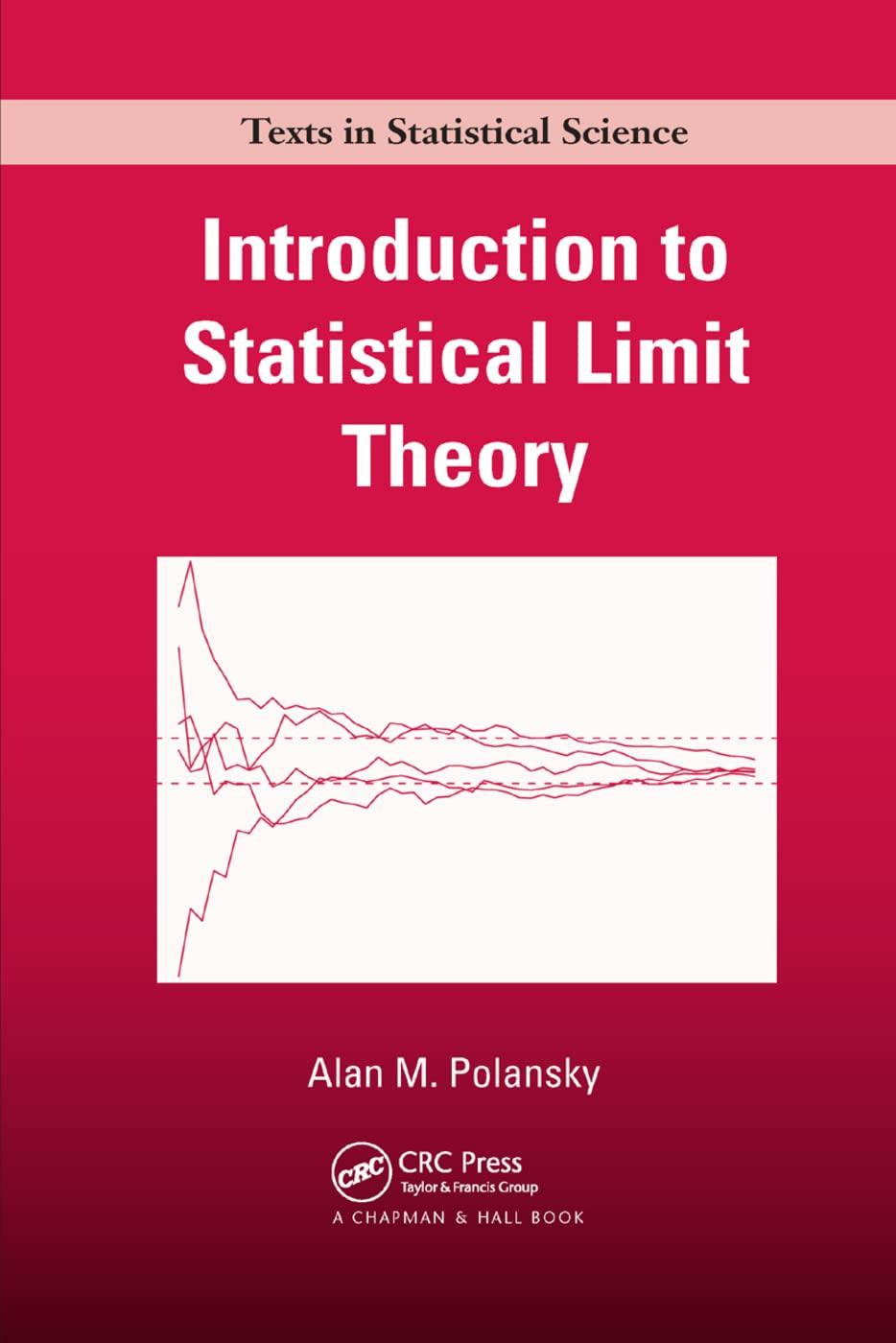Let (mathbf{X}_{1}, ldots, mathbf{X}_{n}) be a set of independent and identically distributed (d) dimensional random vectors from
Question:
Let \(\mathbf{X}_{1}, \ldots, \mathbf{X}_{n}\) be a set of independent and identically distributed \(d\) dimensional random vectors from a distribution \(F\) with real valued parameter \(\theta\) that fits within the smooth function model. Let \(\Psi\) be an interval subset of the parameter space of \(\theta\), which will be assumed to be a subset of the real line. When \(\sigma\) is unknown, a correct observed confidence level for \(\Psi\) is given by
\[\alpha_{\text {stud }}(\Psi)=H_{n}\left[n^{1 / 2} \hat{\sigma}_{n}^{-1}\left(\hat{\theta}-t_{L}ight)ight]-H_{n}\left[n^{1 / 2} \hat{\sigma}_{n}^{-1}\left(\hat{\theta}-t_{U}ight)ight]\]
where \(H_{n}\) is the distribution function of \(n^{1 / 2} \hat{\sigma}_{n}^{-1}\left(\hat{\theta}_{n}-\thetaight)\). Suppose that \(H_{n}\) is unknown, but that we can estimate \(H_{n}\) using its Edgeworth expansion. That is, we can estimate \(H_{n}\) with \(\hat{H}_{n}(t)=\Phi(t)+n^{-1 / 2} \hat{v}_{1}(t) \phi(t)\), where \(\hat{v}_{1}(t)=v_{1}(t)+O_{p}\left(n^{-1 / 2}ight)\), as \(n ightarrow \infty\). The observed confidence level can then be estimated with
\[\tilde{\alpha}_{\text {stud }}(\Psi)=\hat{H}_{n}\left[n^{1 / 2} \hat{\sigma}_{n}^{-1}\left(\hat{\theta}-t_{L}ight)ight]-\hat{H}_{n}\left[n^{1 / 2} \hat{\sigma}_{n}^{-1}\left(\hat{\theta}-t_{U}ight)ight] .\]
Prove that \(\tilde{\alpha}_{\text {stud }}\) is second-order accurate.
Step by Step Answer:






